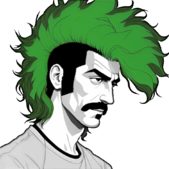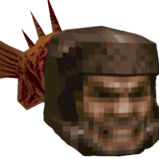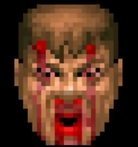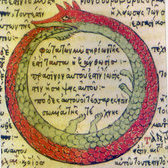-
Content count
605 -
Joined
-
Last visited
About Mattfrie1
-
Rank
Member
Recent Profile Visitors
2899 profile views
-
@Whiteysnakey This actually appears to be the character set that the system uses to display passwords, both given at the end of the level and when you enter a password on the password screen. For the screenshots I changed the value of that string to reflect this, since E isn't a character used for passwords. Unfortunately no Nightmare mode it seems... :(
-
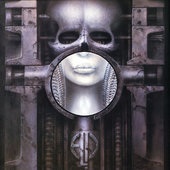
Aubrey Hodges' Final Doom music in Alien Resurrection
Mattfrie1 replied to MajorRawne's topic in Console Doom
That same sample of guitar feedback is the basis of this Duke Nukem: Total Meltdown track as well: -
Messed around with this a little bit more to see if I could determine how the behavior of this works. It seems like replacing the texture name referenced in 0.bin with another one that is elsewhere in the level will have that one display instead. One can also put WMSWALL back into this spot as well, showing that it is loaded into memory but not displayed normally on NTSC versions of the game.
-
Great find @ludicrous_peridot. Just did a quick check in my emulator and this is indeed the "patch" to override WMSWALL. Deleting this reference then loading up the level shows a blank area where the patch should be.
-
So I've recently decided to analyze the September 30th, 1996 prototype of Saturn Doom and have made a list of things that changed between the prototype and the finalized release: View bobbing and weapon swing are much more prominent in the prototype compared to the final product. Player weight also feels much lighter in the prototype compared to the final builds. There are only 2 demos in the prototype compared to the 4 included in the retail editions. These demos are also completely different than the retail versions. The first demo is a complete walkthrough of Map 18: Pandemonium, the second demo is a short incomplete attempt at Map 33: The Gantlet. The most noticeable change in the prototype is the inclusion of the PC version's sound effects instead of the PSX sound effects from the final release. The PC sound effects are rather buggy, with the chainsaw sound effects not cutting off properly and the shotgun sound effect causing heavy clipping if too many other sounds are playing at the same time. I've always assumed that the PC sound effects were a leftover from Bagley's original vision for the port, and were switched to the PSX sounds so only one sound designer could be credited on the final version. There is only mono sound in the prototype, the buggy stereo sound being added at a later date. The same sound driver is being used in this prototype however. For some reason the berserk pack doesn't tint the screen red upon pickup. All other pickups (Invulnerability, Radiation Suit) still function correctly however. The CD audio only contains the tracks that were CD audio on PSX Doom. None of Aubrey Hodges' ambient tracks were converted to CD audio yet, so the track that plays for the demo sequence is used as placeholder for all 59 levels. The opening sequence includes placeholder text instead of the hi-res screens from the final product. A unique animation of the GT Interactive logo is used here, which goes unused but is still on the disc of the final released editions. Special ID Software and Rage Software screens are used during the demo credit sequence which are unused in the final released editions: All of the glitches present in the released editions of the game are present in the prototype, including the incorrect cityscape sky being used for several levels and the Map 24: Hell Beneath secret area texture not being displayed properly. The overall program file for prototype is smaller (349kb) compared to the final releases (395kb). I haven't noticed any major gameplay changes or crashes compared to the final released versions, although I am still poking around the prototype to see what I can find. I also took the time to analyze any major differences between the three regional releases of the port which haven't been covered in major detail as of yet: The PAL edition of the game is the earliest build dating from 11/20/96. The NTSC-U version is second with a date of 1/29/97 and the NTSC-J version is the last build from 3/24/97. There are some extra credits in the PAL version that were removed from the two NTSC editions. As noticed in @ludicrous_peridot's list of strings from a few pages back, a special thanks credit is given to PSX port programmer Aaron Seeler. Also, Rage Software employees Kev Bruce and Steve Lord are credited with Music & SFX in the PAL version, but are only given a "thanks to" in the NTSC versions. The Williams Entertainment logo is still accidentally included outside of Club Doom in both the prototype and PAL versions of the game. It is removed for the NTSC versions. The rumor behind the Japanese version running at a slightly higher FPS has been squashed by others in recent years. The other rumor surrounding this edition, that the CD audio tracks have been rearranged, is also false. The only change in the music for this edition is one CD audio track (A Calm Panic Rises, Track 18 on the PAL and NTSC-U discs) was inexplicably removed from the Japanese CD. This pushes up the running order of the track rotation for the remaining levels in the game starting from Map 10. This also makes the size of the disc slightly smaller for the Japanese version as well (528mb vs. 557mb) Finally, the program file (0.bin) for all 3 regions vary in size slightly, with the PAL version being 394kb, and the NTSC versions being 395kb. Apart from some obvious changes (Link Cable support in PAL and NTSC-J editions), I have yet to notice any major changes between the regions. This is something I am continuing to look into however.
-
Not ashamed to admit that I own about 95 percent of the albums on this collage, great taste in music mate. I definitely would have added: Goodbye by Cream Obscured By Clouds by Pink Floyd (Great underrated album on the cusp of DSOTM) In The Hall of the Mountain Grill by Hawkwind Cultosaurus Erectus by Blue Oyster Cult (Severely underrated album that no one seems to talk about) I also guess I'm one of those rare Genesis fans that equally enjoys the prog and pop years, go figure.
-
@ludicrous_peridot It was actually your comment back at the beginning of page 5 of this thread that inspired me to go back into the hex and see if I could discover a way to actually access the credits in game, so thanks for the inspiration. As for Saturn transparency, I can also testify that back when I played on a CRT via composite that the effect worked great. The effect still works on modern day LCD monitors if you use composite connections for those that are curious.
-
Finally found out how to access the hidden credit sequence! Enter "jb4jh*****" for Rage Special Credits and "lyjvm*****" for Sega Special Credits at the password screen (The asterisks can be any value). After it flashes "invalid password" just press the start button to display the credits. Pretty sure this has remained undiscovered for all these years. EDIT: Seems like this Easter egg is a bit more difficult to enable than just entering passwords. From what I have discovered so far the credits will only display after Map 02 (Plant) has been loaded into memory. Trying to use the passwords from any other map or from starting up the game after powering the system on will not trigger the hidden screens. I've also discovered that the last 5 characters of the password can be any character, just as long as the first 5 characters are the ones listed above. For those curious, I figured out the password values by examining the hex of 0.bin (aka the main program file). The password values for enabling the screens are stored in plain-text right before SKY20 and SKY21 in the code, and are slightly before what appears to be the code for the password screen.
-
I stumbled across another interesting pre-release article of Saturn Doom from the December 1996 issue of EGM. The release date for the game was pegged for November 1996, which of course was delayed by several months until March 1997. Some interesting notes from the write up include how there is "no slowdown during play", yet later mentions that the graphics were "somewhat choppy". This was an issue that they expected would be solved by the time of the final release. It is also mentioned that the music is redbook audio, but that it "matches the music of the PC title". Either the author of the piece wasn't fully familiar with the Bobby Prince PC score and assumed Aubrey Hodges' soundtrack was on the PC, or that it was planned to have the PC music in the game at some point. Definitely an interesting prospect.
-
Forget about a Doom 64 sequel, I want to know what happened to MK Mythologies: Liu Kang dammit! Joking aside, it's unfortunately easy to see why Absolution got cancelled. Final Doom on PSX was given neutral reviews by the critics for going back to the well one too many times with an "outdated" engine, so I would imagine that the rather fickle critics of the day would have been lukewarm to a new Doom engine title being released on N64 in early '98. While the new features of Doom 64 were enough to keep the critics satisfied the first time around, I'd imagine if they got used a second time they wouldn't have been so generous. Not an exact one-to-one comparison, but Hexen on the N64 got ravaged by critics for being "the same old" around the same time as Doom 64's release.
-
This is a trend I've noticed in many game magazines with "Doom-Clones/Corridor Shooters" during this time period. Some reviewers were receptive and positive about them, while others were more neutral or negative and eager to move on to the next big thing (i.e. Quake, Turok, Goldeneye). Nothing better sums this up than the review section of EGM from December 1996, which includes reviews of Powerslave on Sega Saturn, Final Doom on PSX, and Disruptor on PSX, which all showcase the divide that existed with "Doom-Clones" during this time period.
-
I did a rundown on the Hexen console ports a couple of years ago, and both PSX and Saturn versions appear to be based off of the beta version. However Probe, who handled the PSX port, outsourced the Saturn port to a Swedish game company called Atod who at least wrote a new renderer to take advantage of the Saturn's dual VDP setup. It also strongly looks like they wrote a new game engine as well, the main program file on the disc has tons of uncompiled assembly code when viewed in a hex editor which seems to point to this fact.
-
I believe that this might be how the renderer in Saturn Hexen handles drawing flats, since VDP2 handles drawing the level to the screen. I've been messing around with corrupting Saturn Hexen through emulation lately and it is very easy to screw up how the ground scrolls in relation to the player's viewpoint as well as seeing the flat extend out to the horizon if walls aren't drawn properly. I'm admittedly no expert in this but it definitely looks like it from what I've seen in several other Saturn ports (Independence Day, MechWarrior 2).
-
Very cool, I believe the link modes should work. The back of the boxart for the US version mentions the 2-player link mode in error, but I personally believe it was removed from the US version since the link cable was never officially released here. On another random note, I found by going through the Saturn Software Development Standards manual from Sega of America several interesting requirements that Sega had on developers in order to get their games published on the system. Most notably, page 13 of the manual (17 in the PDF) mentions that all games on the Saturn which have a Stereo sound mode must have a Mono sound mode as well to get final approval. I guess Sega was looking out for those with older TVs back then, but it shatters the myth that the mono sound mode of Saturn Doom was included because the stereo sound is broken. I should also point out that the sound in Revolution X (which shares the same sound driver as I mentioned on the last page) is in mono, so chances are that the driver wasn't able to be completely updated to support stereo in time for Doom's release. I feel like I've mentioned this fact somewhere else before, but I didn't see it in this thread so I figured I'd add it here just in case.
-
Thanks for the info, by any chance would you happen to have a link cable setup to test this out on real hardware? I've been meaning to get one but haven't gotten around to it due to the cost of the link cable. @PSXDoomer Saturn Doom contains the same level set as PSX Doom, so no Final Doom levels here. That error also exists on the US version's packaging as well, they simply took stock shots from the PC Final Doom box and called it a day. The manual also includes screenshots from the PC version of Doom II as well, meaning that no actual Sega Saturn screenshots exist anywhere on the product.




